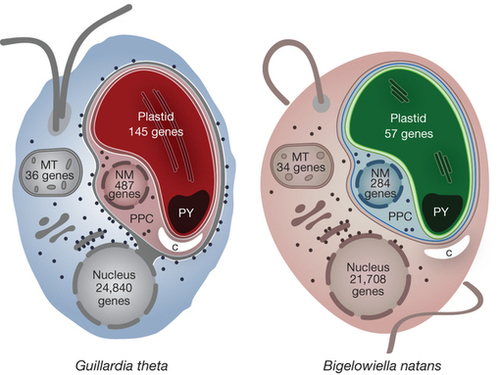Algal genomes reveal evolutionary mosaicism and the fate of nucleomorphs : Nature : Nature Publishing Group
See on Scoop.it – Virology and Bioinformatics from Virology.ca
Cryptophyte and chlorarachniophyte algae are transitional forms in the widespread secondary endosymbiotic acquisition of photosynthesis by engulfment of eukaryotic algae. Unlike most secondary plastid-bearing algae, miniaturized versions of the endosymbiont nuclei (nucleomorphs) persist in cryptophytes and chlorarachniophytes. To determine why, and to address other fundamental questions about eukaryote–eukaryote endosymbiosis, we sequenced the nuclear genomes of the cryptophyte Guillardia theta and the chlorarachniophyte Bigelowiella natans. Both genomes have >21,000 protein genes and are intron rich, and B. natans exhibits unprecedented alternative splicing for a single-celled organism. Phylogenomic analyses and subcellular targeting predictions reveal extensive genetic and biochemical mosaicism, with both host- and endosymbiont-derived genes servicing the mitochondrion, the host cell cytosol, the plastid and the remnant endosymbiont cytosol of both algae. Mitochondrion-to-nucleus gene transfer still occurs in both organisms but plastid-to-nucleus and nucleomorph-to-nucleus transfers do not, which explains why a small residue of essential genes remains locked in each nucleomorph.
See on www.nature.com
